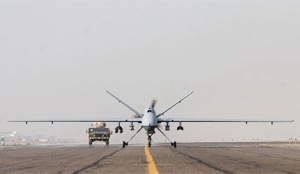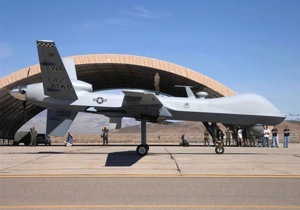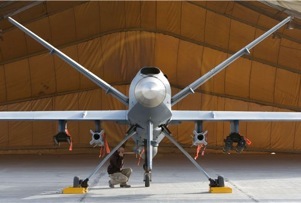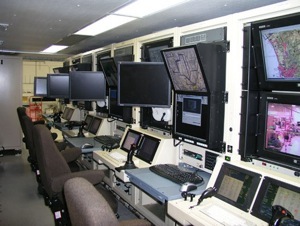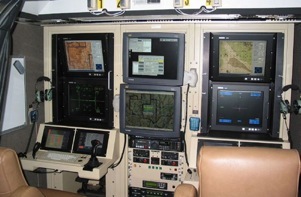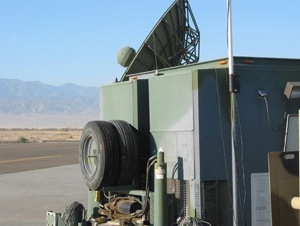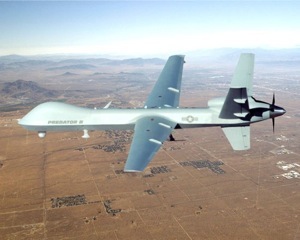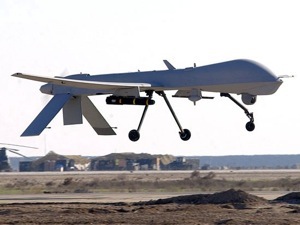Meet the younger, meaner sibling of the MQ-1 Predator unmanned aerial vehicle: the MQ-9 Reaper.
Whereas the older UAV was designed for operations such as surveillance and reconnaissance, the primary mission for the aptly named Reaper is to be a "persistent hunter-killer" drone, the first such device at the Air Force's disposal.
The Reaper has just begun a tour of duty in Afghanistan - that's where it is in this picture from October 1, and where it has flown daily missions since the last week of September. Despite its grim moniker, as of Friday the Reaper had yet to fire a weapon, according to the Air Force.
The Reaper outperforms the Predator in a number of ways. The MQ-9 can fly twice as high and nearly nine times farther, and carries a bigger munitions payload, the Air Force said. Both aircraft are built by General Atomics Aeronautical Systems.
The Reaper may be unmanned, but it does have a pilot - on the ground. The remote ground station for the UAV is a half a world away, at Creech Air Force Base in Nevada (the locale in the picture here). Training missions for the Reaper crews began there in March. At the moment, the Air Force has nine Reapers in its inventory; it didn't reveal how many are in Afghanistan.
The propeller spins during an inspection in Afghanistan on October 1. Note the armaments under the wings. The Reaper can carry a combination of AGM-114 Hellfire missiles, GBU-12 Paveway II bombs and GBU-38 Joint Direct Attack Munitions, to a total of about 1.5 tons. (The Predator, by contrast, can carry just 200 pounds, or a pair of Hellfire missiles.)
The Air Force used a Predator to track Abu Musab al-Zarqawi, a key al-Qaida leader in Iraq - but it was bombs from an F-16 that killed al-Zarqawi in 2006. Now, the Reaper can do both the surveillance and the strike of an elusive quarry - it "is ideal for that type of target," Lt. Col. Gregory Christ, director of staff at Creech, said in an August 27 article in USA Today.
This is the "cockpit" for the pilot and the Reaper's other crew member, a sensor operator. Targeting tools aboard the Reaper, according to the Air Force, include Raytheon's MTS-B multispectral targeting system, electro-optical and infrared cameras, laser designator and rangefinder, and synthetic radar aperture capability. The pilot uses a color camera on the nose of the Reaper for flight control.
Here's another look at the ground control station, also used for the earlier Predator generation. (A next generation is due in 2009.) The Creech AFB unit that oversees the Reaper is the 42nd Attack Squadron. It is the first of three Reaper units the Air Force wants to establish within the next 10 years.
From the outside, the ground control station isn't much to look at.
The Reaper - also known as the Predator B - in flight, in a photo from 2006. The 900-horsepower turboprop engine can push the Reaper to a speed of 200 knots, an altitude of 50,000 feet and a flight time of more than 20 hours, the Air Force said. The aircraft is 36 feet long and has a wingspan of 66 feet (compared with 27 feet and 48 feet, respectively, for the Predator). Its range is about 3,600 miles, versus 450 miles for the Predator.
One distinguishing characteristic is the upturned V of the rear wings, compared with...
